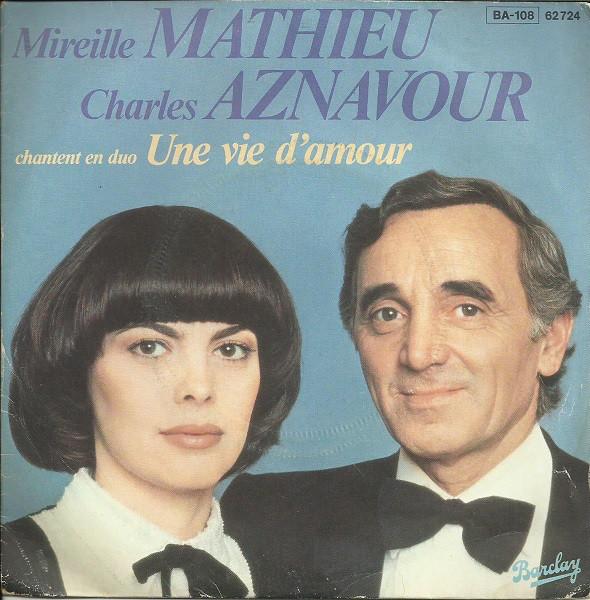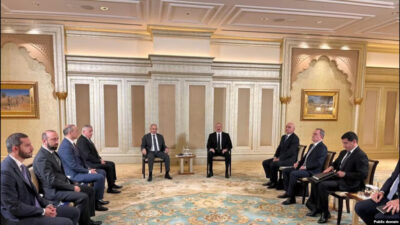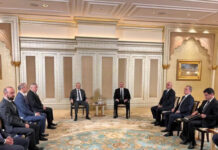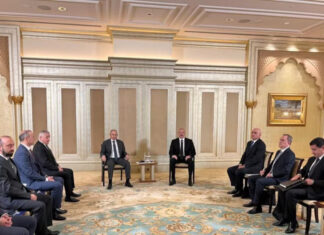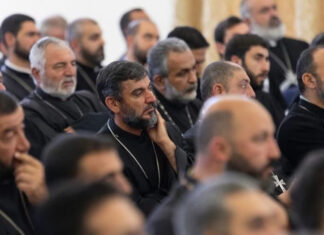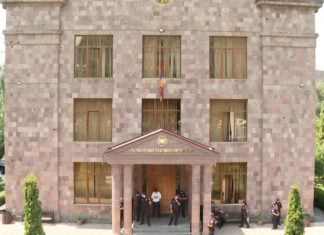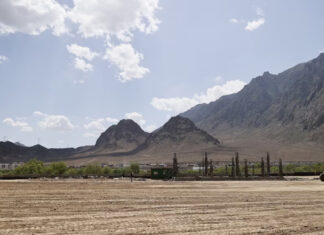The person standing at the far right behind the Soviet leader Joseph Stalin in this historic photo taken in Yalta in 1945 is Soviet Aviation Marshal Sergey Khudyakov. At the moment when the picture was taken, very few knew that his real name was a different one. Regarding his non-Slavonic look, he would vaguely refer to some Georgian origins. The life story of one of the best commanders of Soviet aviation is surrounded by mysteries even today. However, when in 1945 Stalin’s political police, the NKVD (People’s Commissariat for Internal Affairs), arrested him, and five years later shot him, his true name surfaced in the official paperwork of the investigation: Armenak Khanperiants. That’s the name that appears in the note from USSR Prosecutor General Rudenko, which was sent to the government of the Soviet Union in the summer of 1954, the year following Stalin’s death. Rudenko reported about the illegal detention, torture, and execution of Khanperiants during Stalin’s purge. The alleged accusations (membership in the Dashnaksutyun (Armenian Revolutionary Federation) and anti-Soviet activities), which Stalin’s court ascribed to Khanperiants to justify his arrest and assassination, in 1954 were described as non-persuasive and invalid. Rudenko requested that “the council of the Ministers of the USSR authorizes the revision of the decision and rehabilitates Khudyakov-Khanperiants posthumously.” The proposal was adopted unanimously.’
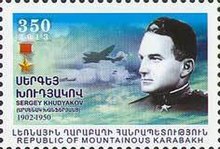
Khudyakov-Khanperiants was Stalin’s chief aviation adviser during the meeting in Yalta with British Prime Minister Winston Churchill and US President Franklin Delano Roosevelt in 1945. Some sources report that Roosevelt liked him so much that he gifted him a personal American airplane. It was Khanperiants who initiated and directed the reforms of Soviet aviation during World War II, when the existing standards of the aviation detachments proved to be ineffective. Based on Khudyakov’s initiative, Soviet planes were concentrated into mighty aviation armies instead of being dispersed among and attached to ground forces, as it was before.
Why Stalin chose to arrest, torture, and kill one of his best aviation commanders remains unclear up till now. It has been established that Soviet aviation’s Armenian commander was born in 1902 in the village of Mets Taglar of Artsakh (then the Nagorno Karabakh Autonomous Oblast). Russian historian Edvard Radzinski described Khudyakov as an exceptional pilot. “A single flight over the unknown area would suffice for Khudyakov for not taking any maps with him for the second flight,” said Radzinski in his recent documentary dedicated to Khanperiants.
Armenians also were present in the previous meeting of the Big Three, which happened in Iran’s capital of Tehran in 1943. As it is largely known, Nazi Germany was contemplating an attempt against Stalin, Roosevelt, and Churchill at the time. According to historians, one of the Nazis’ options was digging a tunnel from the Armenian cemetery of Tehran to the British Embassy. On November 30, the British PM Winston Churchill was planning to celebrate his birthday at the British embassy. The Nazis hoped to penetrate to the embassy using the tunnel and kill all three leaders.
The person who neutralized the Nazi plans was another Armenian: General Ivan Agayants, who was in charge of the safety regime in Tehran. Fluent in Persian, Turkish, French, and English, he was one of the most decorated officers of the Soviet intelligence of its time. Among others in charge of neutralizing the Nazi plans was Gevorg Vardanian, who would later become a high-ranking officer.
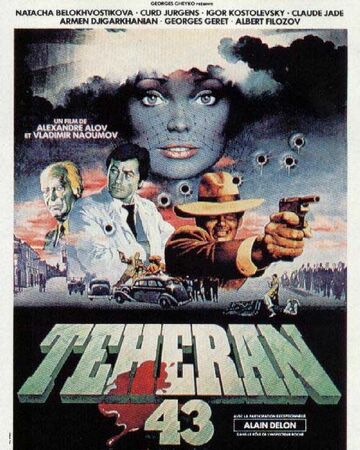
In 1980, the USSR, in cooperation with France and Switzerland produced a fictionalized movie dedicated to the historic days of 1943. Significantly different from the actual course of action, Teheran 1943 attracted incredible attention, becoming one of the top Soviet films watched in Europe. The highly recognizable voice of the French-Armenian singer Charles Aznavour accompanies the scenes depicting the World War II battles in the motion picture. Aznavour’s theme, called Une vie d’amour [A Life of Love] was soon released by the French Barclay Records company in three different albums: “Tehran 43,” “Autobiographie,” and “Une vie d’amour.” The song’s track was composed by another French-Armenian, Georges Garvarentz, a composer of many notable French movies (e.g. The Thunder of God, The Time of Wolves).
